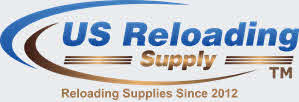"Bullets, Bullets, and More Bullets" - Written by Bob Gordon
Bullets, Bullets, and More Bullets...
Full metal jacket/plated/lead -
Which one to choose?
By: Bob Gordon

When looking for loaded ammunition or reloading components one has a bewildering number of varieties to choose from. Hopefully, this short article will clear up some of the confusion.
I will consider these bullet types as it applies to reloading.
The simplest bullets are described as cast lead. Casting, being the process of making these bullets. These are purely of lead or lead alloy. The percentage of alloy determines the hardness of the bullets. These may be described as: Round Nose (LRN), Flat Point (LFP), Wadcutters, or Semi-Wadcutters. All of these can be appropriate for use as plinking, target practice; and to a limited extent for self-defense (wadcutters). The flat points & wadcutters are especially useful for clearly seeing the holes these produce on targets. They are useful in self-defense due to the ease with which they mushroom upon impact, creating wide wound channels. As for pros & cons: the lead bullets are much cheaper than their jacketed or plated counterparts. Also, since they are made solely of bare lead (alloy); they can be self-made at home (with adequate ventilation) resulting in even more savings. However, these bullets are limited as to velocity which should not exceed ~900 ft/sec. This is due to their tendency to leave nasty lead deposits in the barrel, which are a nuisance to remove without the assistance of harsh smelling solvents. A trick I found to reduce this was to fire about 5 rounds of full metal jacket bullets at the end of each range session, which helped greatly when cleaning the barrel.
This leads us to the jacketed bullets which are the most familiar and popular amongst shooters desiring more velocity and penetration for self-defense use. As it says, a jacketed bullet is made with a lead core covered with a “jacket” of copper metal. They can be found in a variety of shapes such as Round Nose (JRN), Flat Points (JFP) and Hollow Points (JHP). These JHPs being the #1 choice in self-defense due to the much wider wound channel produced by the hollow point construction. This produces excellent percentages of 1-shot stops, and less chance of over-penetration which can result in possible legal consequences when used in populated areas. The drawbacks to jacketed bullets are their price; being more expensive than the other two mentioned bullets. However, if you stay with the RN or FP varieties, this should not be too hard on your wallet; since it is always advisable to practice your self-defense with similar loads as to weights.
Our last choice is the Plated Bullets which seems to be the middle ground between the other two designs. They are simply lead core bullets which are electroplated (electrolysis) with a very thin layer of copper metal (not a jacket). This somewhat solves the problem of barrel leading at higher velocities (up to ~1000 ft/sec). Also, they are safer to work with when reloading; not having to come in direct hand contact with bare lead exposure. Also, less lead fumes are produced during shooting, which is very important during indoor range practice. These bullets are also found as RN, FP and even HP (hollow point) varieties, giving the shooter a greater choice.
So, there you have it… now go out and enjoy (And give the friendly guys at USRS a call to help with your choices)!
